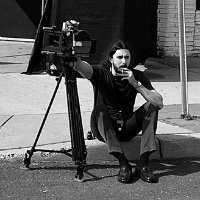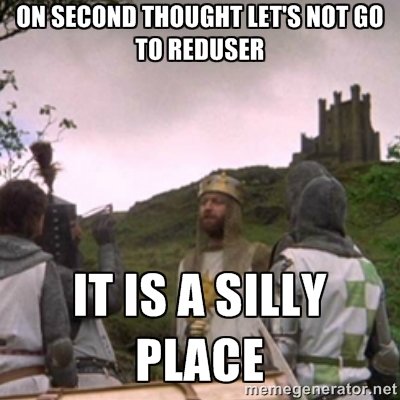-
Posts
1,078 -
Joined
-
Last visited
About Phil Connolly
- Birthday 01/12/1979
Profile Information
-
Occupation
Director
-
Location
Brighton
Recent Profile Visitors
-
For multi-camera type work my current goto camera is the Sony Fx6. In the UK (at least) they are affordable to hire with good availability if you need multiples. Image quality is good and the file sizes are manageable (something to consider on long form multi-camera). Sony's skin tones are now decent and the 13 stop latitude is plenty for appropriate lighting. The internal vari-ND is excellent - makes it quick and easy to match exposure across cameras. The auto focus is also excellent, so good I actually use it on more static shots. So you could save money on focus remotes for some of the positions. Only downside is the full frame sensor reduces your lens options, but you could mix it with a few Sony Fx9's on S35 mode for longer lens shots. I've done a few shoots with Fx6 in FF 4K and Fx9 cropped to s35 4K and they have matched really well. The autofocus on the Fx6 is better then the Fx9 if you plan to use it. You can totally get great result from mirrorless cameras. But they are less then ideal in practice. They often only have HDMI video outs. For long cable runs in a theatre needed to send the signal back to the gallery/control room/directors area - you typically would want to use HD-SDI. You may need 100ft+ cable runs and I don't think HDMI would be up for it. Its possible to convert HDMI to SDI using converter boxes, but by the time you've rented those - you may as well have gone for a professional camera that has SDI. Mirrorless/prosumer cameras typically lack advanced timecode controls and external timecode inputs. Yes, you can edit multi-camera without matching timecode. But its vastly easier if all the cameras are locked to the same timecode reference.
-
I guess we can't choose what hill to die on. I'm not irritated by people that shoot on film. Just the people that think shooting on film is somehow better or valid. There does seem a strange orthodoxy on these pages and a reverence to the "old ways" that's disconnected to the way most productions work. Shooting format is fetishized at the expense of the wider discourse around filmmaking. But your right I shouldn't let it bother me, cinematography.com has become a bit of a crazy place and I shouldn't be contributing to the crazy. Digital doesn't need me defending if. I wish you all good luck, but I think I should go cold turkey and step away. See you at the Oscars
-
It proves my rule Tarantino doesn't introduce Hateful Eight as "my ultra Panavision film"... he introduces it as "Tarantino does a western" (talking in the 3rd person a bit) or the 10th Tarantino film. Or a Bunch of crooks in a thing.... The story/tarantinoness is the main selling point and its unique shooting format is a bonus thats discussed a little way in. The rule is simple if THE VERY FIRST THING a filmmaker says about their film is "I made this great [INSERT SHOOTING FORMAT HERE] Film" .... be like Bruce Dickinson and RUNNNN FOOOR THE HIIIIILLLLLL's
-
Your miss-understanding the point, if the first thing the filmmaker says to introduce their film is "My 35 mm short film...." Its nearly aways bad... its a basic rule. If the film was good the filmmaker would introduce it as "My documentary about female sumo wrestlers"..or "My short film about facing your fears and mental health." The filmmaker can also say "My cosplay doc about furry culture and mental health that happens to be shot on film"... is also fine and has a chance of being a good film. I'm not stating that a 35mm short film can't be good of course thats not true. But if the first thing that comes out of their mouth is the shooting format. We have all encountered filmmakers that mention shooting format before the story. They nearly always have the wrong priorities, about what makes a good film. Resulting in a less then good film. Again i stand by my rule... I've even been guilty of it in the past... I could point to examples on this very forum (but won't because I'm too polite)
-
The basic rule of film production is if the filmmaker introduces it as: "My 35mm short film...." Its nearly always terrible... its an immutable. If the technology is the first thing the filmmaker mentions, they have their priorities wrong. (this isn't just a film issue -digital has its own share of miss priorities. "My RED 8K anamorphic film..." is just as likely to be just as meh, but higher resolution and less grain)
-
I used to get anxious at Eastbourne Cineworld and sit near the the end of the row so I could quickly run out and shout at someone. What ever they used to automate the anamorphic lens changes after the trailers could be hit and miss. Projectionists became an endangered species once long play platters and automation got more sophisticated. Cheaper to have someone on close to minimum wage thread up and set the timer and just hope the film starts in frame/in focus. Projection standards in most locations were pretty lax in most locations by the late 90s. You'd still get proper projectionists in big cities and art house cinemas - but out in the sticks you were at the mercy of Cine-world. I was very anti digital projection the first time I saw "Attack of the Clones" on the prototype 1.3K DLP projector - the on screen image looked like the display of a washed out IBM think pad - grey blacks and massive pixels. I was still a hard core film purist. But what can I say, places like Cine-World wore me down and digital kept getting better. I've been won over and as I've learn more about filmmaking I've less fixated on the technology (although I'm pretty high on the nerd scale) and think more about the other stuff..
-
I'm not against film screenings from a historical perspective, sure the technology should be preserved for people to view. I've seen both "This is Cinerama" and "How the West Was Won" projected in 3 strip Cinerama which was a cool experience. I understand why people seek out film screenings, its a bit different but its not "better". Sure 35 mm done well can look really good. We had Kinotons and access to pristine show prints at film school, so I'm aware of how good 35mm can look. But the reality of going to a typical multiplex with one "Booth Usher" threading up projectors for 16 screens tended to not result in perfect presentation. When I go to see a movie, I'm going to be immersed in a film, not observe a projection technology. Any time I see or hear a fault it takes me out the film and I observe the fault, not the story. That happened a lot more with film eg: Scratches - thats annoying , 3D IMAX scratches - really annoying the sratches are floating in 3D, Colour/density shifts on reel changes, miss timed change overs, miss-framed change overs, lamp colour temp shifts on change overs, keystone distortion shift on change over, change over cue Lab splices, badly repaired lab splices, missing frames, audio pops on lab slices Optical sound, scratchy optical sound, Optical sound with worn sound bearing Dolby Digital Drop out, SDDS drop out, Non existent DTS because the CD-ROMs were missing damaged Dirt Soft low contrast prints on mass releases - I remember Lord of the Rings and Harry Potter looking really soft and grainy Black and white films printed on colour stock Miss-framed projection, neg splice flash visible, dirty projector gate's cinch marks, diagonal platter scratches, brain wraps Unstable projection - vertical jitter Projector audible in the auditorium 16mm Optical audio too much film guard used - resulting in visible streaking (although this is rare because few cinemas used film-guard) Reels out of order Wrong lens used - eg scope on flat For film to be done right an a lot has to go right and its a real fragile format - even a good projectionist can miss something and trash a print. On average I'd say digital projection looks better, is more reliable and has fewer distracting artefacts which is a good thing. These days films are finished digitally, so its not possible for a film print thats a couple of optical generations away from the source to look as good. I'm not up for destroying films legacy, but I don't see much point in new releases being released on film. I do understand the arguments about whats the point of cinema if its the same as what you can get at home? And I broadly agree, I tend to go to the cinema less now I have big 4K TV, then when I had a 20" SD TV and VHS. I agree cinema has to be better then what you have at home. But that can be achieved by big screens, big sound systems (that don't need wife approval), excellent picture, a communal experience (I miss that in these covid times). When I sought out screenings of Blade Runner its because I desperately wanted to see it on a big screen in a version that was better then rubbish original DVD transfer. I sought it out in 3 cites in 2 different countries - travelled quiet a distance for the screening. For one of the screenings paid for premium tickets. Each time I hoped to watch "Bladerunner" and each time I watched scratchy crackle fest - the dvd was more watchable. Finally watching the 4K restoration on a big screen in DLP was close to a religious experience, something I'd never been able to get in a film screening.
-
A move to film projection is really a step back why would that be a good thing? - Its expensive to master and produce prints. There is a greater environmental impact then digital files - Prints are heavy and expensive to ship, again worse for the environment then digital. - On screen the quality of 35mm has been superseded by the current generation of digital projectors, 70mm is perhaps better better but that brings in even more costs to produce and ship. - Limited number of venues that can show film, less then 100 for 70mm - Projecting film is more labour intensive - Film gets damaged, sure with an A grade projectionist and equipment film can look very good, even after 100's of runs...but that is very much the exception, not the rule. Most cinemas trashed the prints, dirt scratches etc... Even happens on the 70mm expensive runs, the London 70mm print of the master was scratched pretty early in the run and thats at a supposed "west end" cinema with good facilities. - In perfect conditions film projection can look loverly, but the reality is it usually didn't. Digital has brought consistency to cinema projection. I've seen Bladerunner projected on 35mm three 3 times and once on DLP - the DLP looked a thousand times better then the 35mm prints in circulation - which as times were more scratches then image. Sure their is some hipster cool factor attached to film projection in the same way that vinyl is popular. Screenings sell well because Chris Nolan is good branding.... but 35mm at least isn't that good, its less practical, more expensive and usually looks like crap. Once you put laser projection or Dolby cinema into the mix its not even close in terms of quality.
-
I don't know its pretty standard for Red to tease for months/years on Reduser. Most camera companies don't even announce a product till the specs are locked down and its close to delivery. At one point wasn't this going to be an attachment for their phone? Not sure why people get so excited about Red products when they keep moving the goalposts so much. I think they like to keep things vague to make comparisons difficult. If I was in the market for an affordable camera I'd be looking at the Lumix SH1 or saving up a bit more for the FX9. Then you have more straightforward specs/prices. I'm not sure what market this camera serves. At the budget level there are more keenly priced alternatives, with cheaper accessories. Its not a great doc camera, no XLR audio or built in ND, its not going to be good alternative to the FS7, FX9 for TV work. I guess it could be ok on a gimbal/drone - but the high end Reds are already small enough for that task. So is it just for the small group of Red fans that just want a Red but can't afford a Dragon or Gemini?
-

Mechanics of digital video capture.
Phil Connolly replied to Bob Speziale's topic in General Discussion
Early DLSR's like the 5D M2 used line skipping and or pixel binning - resulting in issues such as aliasing or moire. These days cameras are better able to do in camera mathematical scaling or record at higher resolutions allowing a 1:1 ratio between sensor photo-site and recorded pixel -
Mainly, that I wish they put product details on their website. Rather then teasing stuff for months on Reduser. Its a pain wading through the forum to work out the spec's, prices etc... There's still nothing on Red.com Otherwise it's probably good, global shutter is certainly a good thing, same with AF if it works, but there is a lot of very good competition in the price range. Although I'm not that sure what the actual final price is and how much the bits and bobs to make it work are at this point....it's probably on reduser...but
-
On the pocket 4k. I believe scaled full sensor is limited at 60 fps and the cropped windowed mode allows 120 fps. In 1080p mode scaled looks better but windowed looks good too. It's a tight crop though, difficult to shoot wides
-
Some of the discourse around casting is a little silly. "E.g only LGBTQ actors can play LGBTQ roles".... etc It totally ignores what acting is. Sure it might be better from a performance perspective to have an actor with personal experience of the character they are playing. It might make the film and performance better and more informed. Or it might not, a good actor is a good actor. Straight actors can play gay characters, gay actors can play straight characters, men can play women, women play men...The whole policing of who can do what role from both sides of the debate misses the point. Would love to see what the more paranoid "representation police" would make of a traditional British Pantomime. Its strange how colour blind and gender blind casting happens all the time in the theatre with little fanfare, but on film its contentious. I don't disagree with other comments about positive discrimination. To my mind its bolting the door after the horse has run away. Its not actual change but a band aid over problems. While I'm not a fan, I don't really get that angry about it that much, because its usually well intentioned. It comes from a place of trying to do something, even if it potentially only pisses of people that are excluded and doesn't help the recipients that much. (I make this point as an outside observer, i've never been internal to any of these things, so its possible maybe it is a help, I don't think it is, but its not black and white, end footnote) Back to the Daily Mail article - I still think its painting a divisive picture, not attempting represent how things are, but using a worst case scenario to attack progressive causes. The article and the tone of it is written in a way to make "white, straight, males" feel under attack. In reality, i don't think its that bad and if you look at who's getting the opportunities higher up the chain in most departments - it doesn't look like white/males etc... are particularly under represented. The main reason I take issue with the DM article is it seeks to miss represent Hollywoods diversity problem. E.g "White Males are the oppressed group", when the opposite is true. Lack of diversity my not be resolved by positive discrimination.. But it will never be improved if people follow the Daily Mail line and ignore the problem, this article is deeply troubling from that perspective. I'm sure the quotes in the Mail Article are true, but it paints a picture of white men under siege. Making a moderate problem look much worse then it is. I'm sure the article has a seed of truth in it - thats been manipulated and twisted to suit the DM's agenda. This is an article with an agenda not a sober report of fact with stats and studies to back it up. Meanwhile pay gap stats and diversity reports in many industries paint the opposite picture. The whole point of the BLM movement is a about awareness, e.g most white people don't witness loads of racism so we think its a non problem. The BLM movement has basically stated its still an issue, and when you look at the state of some of the stuff on social media and how racist some people still are, its sobering.
-
Sure, I'm not fan of positive discrimination either, it gives the Mail ammunition and is potentially patronising for the people its seeks to help. No one wants to be the "diversity hire" people want to be hired on their own merits. I was just making the point that we are still a long way from white straight males being the most oppressed group. If you look at the data from 2019: https://socialsciences.ucla.edu/wp-content/uploads/2019/02/UCLA-Hollywood-Diversity-Report-2019-2-21-2019.pdf Both women and minorities are underepresented in many key roles, particularly in more senior production roles. It's not a "historical" issue it's still happening now. And no doubt that sucks, I've never been a fan of positive discrimination. I'm taking issue with the daily mail idea that white men are somehow "more oppressed" or "disadvantaged" - a quick scan of the Oscar/Bafta nominations each year will tell you otherwise. In our own career we have no idea if we benefited from our gender/race/social standing, we get a job - we assume its fully on merit. But you don't know. Yes, your excluded from X as stated, but you can't tell how many things you were able to access that others were potentially excluded due to race of gender. I once took a job and the owner of the small company told me day 1 of the job, that he'd picked me partially because in his own words "I would never hire a woman". . But one way of making steps in the right direction is accepting there is a problem. Claiming white males are the new most oppressed group in our industry does not bear out. Take cinematography, how many oscars were won by people other than white men? That said I do agree it can feel like your under attack from the "woke police". In general I agree that sometimes you can feel its not that cool to be a "white male" right now. We are under attack because of our position in a system that we never personally set up or endorsed. But I think a lot of that is Daily Mail type posturing and some of these new issues we now face as white men (those of us that are that), it's still less than what many ethnic minorities and women encounter. Personally, I don't need to be included in everything, there is nothing wrong with setting up organisations/seminars etc... to support certain sectors of the population. I'm not allowed to join my local over 50's tennis club.. it doesn't bother me. There are plenty of tennis clubs that allow 40 somethings like me in (and I hate tennis)








